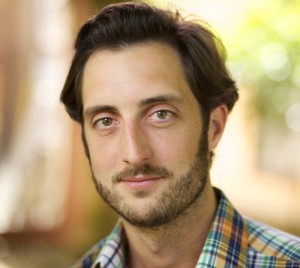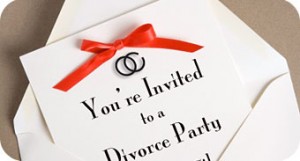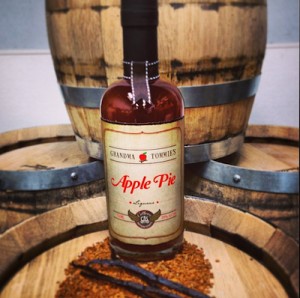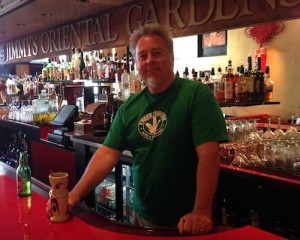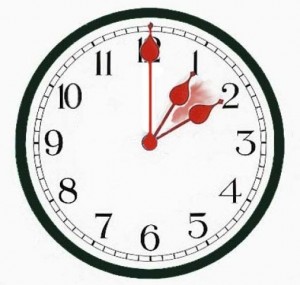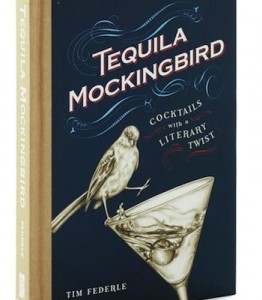Together these eight charities comprise the most recent recipients of 55 grants totaling $4,125,000 to local nonprofits in Santa Barbara, Goleta and Carpinteria since the Women’s Fund began in 2004.
Always a highlight for members, this ninth annual site visit offered an opportunity for people to observe firsthand how their donations are making a crucial difference in their neighbor’s lives, as well as how powerful their individual gifts can become when they are part of a collective philanthropy group.
Traveling via Santa Barbara Airbus, the site visit included a stop at Catholic Charities of Santa Barbara, which received a $50,000 grant to use for emergency supplemental food and case management to aid low-income families in crisis.
Frank Bognar, regional director, says the facility serves approximately 8,500 people a year. Explaining the various services Catholic Charities offers — which include case management, food distribution, life skills planning, counseling services, operating the Thrifty Shopper store and providing vouchers to clients, medical treatment, grants and referrals, emergency shelter assistance, older adult services and holiday programs — Bognar said, “We try to both provide the fish and teach people how to fish.”
The next stop was the Westside Boys & Girls Club, which received a $75,000 grant for renovation and expansion of its clubhouse to create an educational resource center for teens and pre-teens.
Gina Carbajal, executive director of the United Boys & Girls Clubs of Santa Barbara County, explained that the group provides services to 7,000 children throughout the county, including about 200 per day at the Westside Club. The resource center donated by the Women’s Fund will provide students with a quiet learning space of their own, offering homework help and tutoring.
Development/grant specialist Donna Reeves gave an overview of a typical day at the Westside Boys & Girls Club.
“Getting homework done is the first priority,” she said, explaining that the children are given incentives to get their work done as well as assistance when they need it.

Catholic Charities of Santa Barbara was among three sites toured Thursday by members of the Women’s Fund. (Peter De Tagyos photo)
David Lee, regional director of Notes for Notes, an independent nonprofit that has a satellite studio at the club, also gave tours of a very impressive “jam room” where children receive free access to musical instruments, instruction and a recording studio.
The third site toured was Doctors Without Walls-Santa Barbara Street Medicine, which received a two-year Women’s Fund grant for a total of $50,000 for the Women’s Free Homeless Clinic to provide medical care and essential services to unsheltered and marginally sheltered women in a safe, female-only environment. The clinic is located at Transition House, where treasurer Marguerite Sanchez welcomed members.
“The mission of Doctors Without Walls-Santa Barbara Street Medicine is to provide free, volunteer medical care for the most vulnerable, underserved populations in Santa Barbara County, when and where they are in need,” she said. “(The clinic) serves a highly marginalized, at-risk population living in extreme poverty. Many of the women we treat have been victims of domestic violence as well assault, affecting their ability to take adequate care of themselves. … They live in parks, in cars, under freeways, on the beaches and the streets. Many more of our women live in the public shelter system where services have been dropped to an all-time low and sometimes the only hot meal they receive is the one provided at our clinic.”
A tasty sample of one of those hot meals was provided to Women’s Fund members by the Organic Soup Kitchen, which partners with Transition House and the women’s clinic to provide nutritious food. This year they anticipate serving 20,000 meals to needy people in the community, with a need for 30,000 meals anticipated in 2014.
The buses then went to the Santa Barbara Woman’s Club for additional presentations by grant recipients.
“The Women’s Fund site visit is part of the rigorous research process that ensures we have effective, creative programs and agencies from which to select when we cast our votes,” site visit chair Sarah Stokes said. “The progress of our grantees is then followed to confirm the money we’ve donated is being well spent. … Today, we have the opportunity to see firsthand the effective use of our collective funds and hear from the grantees how your money is being put to use and the work we are doing together to change the lives of women, children and families in our community.”
On behalf of Future Leaders of America, which received a $65,000 grant for leadership training and academic support for local high school students, program director Gabriela Rodriguez said, “Due in large part to Women’s Fund support, Future Leaders hosted a weeklong youth leadership camp for 95 new participants (64 of them from Southern Santa Barbara County) at Cal State Channel Islands. During the summer camp, Future Leaders works to create an environment where the ‘Impossible’ becomes the ‘I’m Possible.’ Students learn to effectively express their opinions and ideas, discuss their challenges and fears and develop the necessary skills to advocate for themselves at home, school and in their community.
“The youth we served this summer come from the most marginalized areas of our community. From Santa Barbara alone, 37 percent of the youth come from low and 53 percent come from extremely low-income families. More than one-third come from single-parent homes. This is only important to highlight because I can assure you that the lives we touched are the ones that need our support the most.”
As the recipient of a $50,000 grant to Girls Inc. of Carpinteria to fund Eureka!, which is a dropout prevention and college readiness program designed to encourage young girls to attend college and pursue careers in science, technology, engineering and math, according to Executive Director Victoria Juarez.
“This summer, thanks to your investment in the Eureka! program, Girls Inc. Carpinteria sent 42 eighth- and ninth-grade girls to the UCSB campus, where they spent four weeks learning what it takes to succeed in higher education,” she said. “Many of them will be the first in their family to attend college, and we have had the honor to see them inspired, challenged and sometimes perplexed as they navigated an entirely new environment. They are all, without a doubt, much better prepared to take advantage of the opportunities offered by a college education.”
Board member Dr. Yoni Harris spoke on behalf of Isla Vista Youth Projects, which received $50,000 for capital funds to improve interior and exterior areas, including the playground at the Isla Vista Family Resource Center.
“As you all know, there is no shortage of nonprofit agencies or good causes in Santa Barbara,” Harris said. “The Youth Projects rises to the top of my priority list because of their commitment to an underserved community, depth and breadth of programming, passion of the staff and, most of all, the children and families who come through the door every day.
“The Women’s Fund grant has allowed us to make some much-needed capital and safety improvements to our Family Resource Center, which serves as the service hub for Isla Vista and Goleta families. Although not glamorous work, these improvements were certainly necessary work. The Youth Projects offers a continuum of programming beginning with babies, toddlers and preschoolers who attend the full-day year round Children’s Center. These same children later attend the after-school and summer program at Isla Vista school kindergarten through sixth grade. … Thank you again for your faith in our ability to make a difference in our small part of the county.”
Next up was Melissa Garcia from the Youth Violence Prevention Program, which received $85,000 to provide funding for a female outreach worker helping at-risk girls in Santa Barbara secondary schools.
“Females ages 12 to 19 are the fastest-growing segment in the youth corrections system, and locally, the number of girls entering the probation system has more than doubled over the past eight years,” she said.
Garcia works with about 40 eighth-grade and freshmen girls, with five to seven girls at each school site.
“I pull them out of class once a week, and we talk about different topics that they have chosen that they want to know more about — for example, domestic violence, teen dating, healthy relationships, trust, drug abuse, depression, anger control and better communication,” she said. “I have created a safe environment for these girls to open up. I thought it was going to take a few weeks before the girls really started to talk openly to me, but I was wrong. They want to tell someone what is going on in their lives. They want to be heard. They want someone to be there for them. They want someone to listen without judging them and to help them develop more positive strategies to deal with their situations.
“There is also a great need for us to empower these young women, because if we don’t, they might eventually drop out of school, get involved in unhealthy relationships, become addicted to drugs or even end up pregnant. … All of these young women that I work with have so much potential, and it is my job to help them realize just how much potential they have. Anything is possible in this world, and I am going to do whatever it takes for these girls to see that and start to believing in themselves.”
The final grant recipient was Marsha Bailey, founder and CEO of Women’s Economic Ventures, which received a $100,000 Women’s Fund grant that established a micro-loan fund to assist low-income women in South Santa Barbara County start or expand their own businesses.
“WEV’s mission is to create an equitable and just society through the economic empowerment of women,” she said. “The fact is that the lack of financial resources restricts a woman’s freedom and choices. Period. The truth of this is still seen today: In 2010, only 14 percent of SBA loan dollars went to women. Undercapitalization is the most common reason for business failure. WEV created its Small Business Loan Fund to ensure that low- and moderate-income women could get the money they needed to invest in their businesses until they could become bankable — a process that usually takes at least three years.”
Bailey explained that the $100,000 from the Women’s Fund resulted in a matching grant from the Treasury Department CDFI (Community Development Financial Institution), in effect doubling the grant.
“In fact, Treasury matched the Women’s Fund grant plus $500,000,” Bailey said. “We thank you, the members of the Women’s Fund, that voted for our grant of $100,000. Know that you are helping change the path of poverty in Santa Barbara.”
Steering Committee chair Sallie Coughlin wrapped up the event: “I am happy to report that our membership contributions are on track for this year, which means that when we next meet — at the Presentation Awards, which will be on Monday, April 28 — we expect to award at least $500,000 in grants to local nonprofits.”
About the Women’s Fund of Santa Barbara
The Women’s Fund is a collective donor group that has awarded 55 grants totaling $4,125,000 to local nonprofits in Santa Barbara, Goleta and Carpinteria since it began in 2004. The concept is simple: Women’s Fund members pool their charitable donations, research critical community needs and then vote on which agencies will receive the funds collected during the year. The annual site visit is a midyear progress review that enables Women’s Fund members to see their gifts in action.
Click here for more information about the Women’s Fund of Santa Barbara, or call 805.963.1873.
Originally published on Noozhawk on October 21, 2013.

 A spirited toast to all things alcoholic! by
A spirited toast to all things alcoholic! by  Leslie Dinaberg: What a fun job you must have.
Leslie Dinaberg: What a fun job you must have.